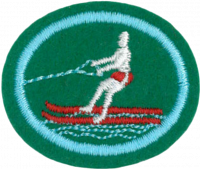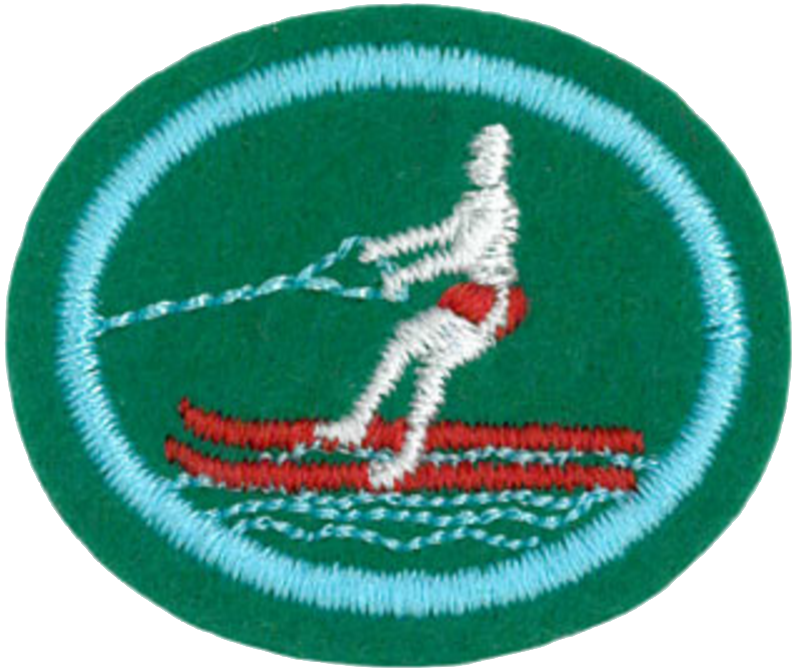Distinctions JA/Ski nautique/Réponses
1
Pour obtenir des conseils et des instructions, consultez Natation II.
2
2a
2b
2c
2d
2e
2f
2g
2h
2i
2j
2k
3
3a
3b
3c
3d
3e
3f
Use right or left arm to motion in the direction you want to go.
Other useful signals not in requirements
Start: Shout 'hit it' or nod head.
Jump: Raise hand up sharply, imitating a jumping arc.
Pick Me Up or Watch for Fallen Skier in Water: Hold a ski vertical in the water beside you.
4
Practice, practice, practice. You should really have an instructor for this honor.
5
This means cross the wakes without falling in the water. A good demonstration of the results of your practice.
6
6a
The standard type of skis most people start with. Two skis, one for each foot, with bindings to hold your feet. The skis may be interchangeable to make them easy to put on in deep water. Sometimes on ski has a second binding so a skier can drop the other ski and continue with just one ski.
6b
In an attempt to become as agile as possible, slalom water-skiers use only one ski with feet oriented forward, one in front of the other. Slalom skis are narrow and long, at 57–70 inches (145–178 cm) depending on the height and weight of the skier. The two forward-facing bindings vary: they can be made of rubber or thick plastic, and they can be designed more like a snow ski binding or more like a roller blade boot.
6c
Trick skiing uses small, oval-shaped waterskies. Beginners use two skis until ready to switch to one ski. The shorter, wider trick ski has a front binding facing forward and a back binding facing at a 45°. It has a smooth bottom that allows it to turn over the surface of the water. According to official 2013 Tournament Rules for 3-event competition in the United States and the Pan-Am Games, skis used in the Tricks event must be a single ski without fins, although molded rails/grooves less than 1/4" are allowed, as are a foot pad cemented to the ski as a place for the rear foot; in addition, the ski must float with all bindings, fins, etc., installed. The trick ski's configuration allows performance of both surface and air tricks in quick succession with enough practice and training.
6d
A kneeboard is a buoyant convex board similar to a surf board on which the kneeboarder kneels. A boat is used to tow while the boarder hangs on to the towrope. Some kneeboards have fins and some do not for increased maneuverability. Most use Velcro straps to secure the knees.
References
- Hand Signals and Safety (California) http://www.dbw.ca.gov/Pubs/Watski/INDEX.HTM
- http://en.m.wikipedia.org/wiki/Waterskiing


